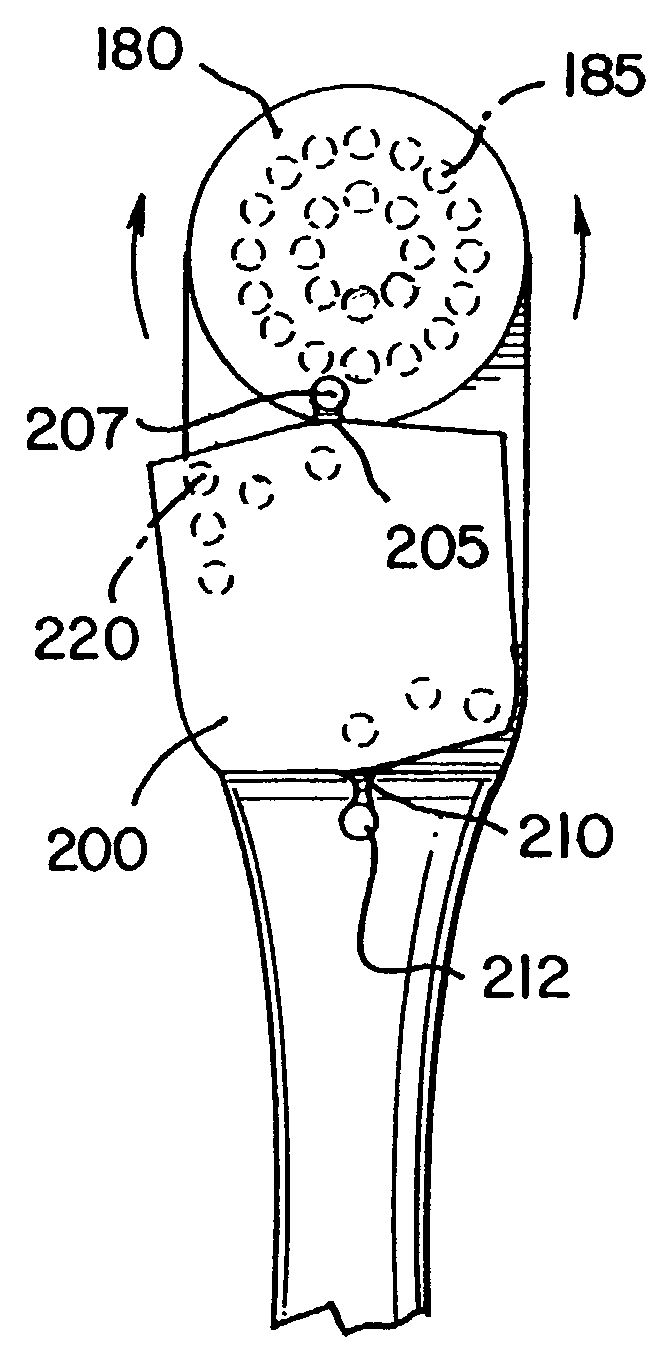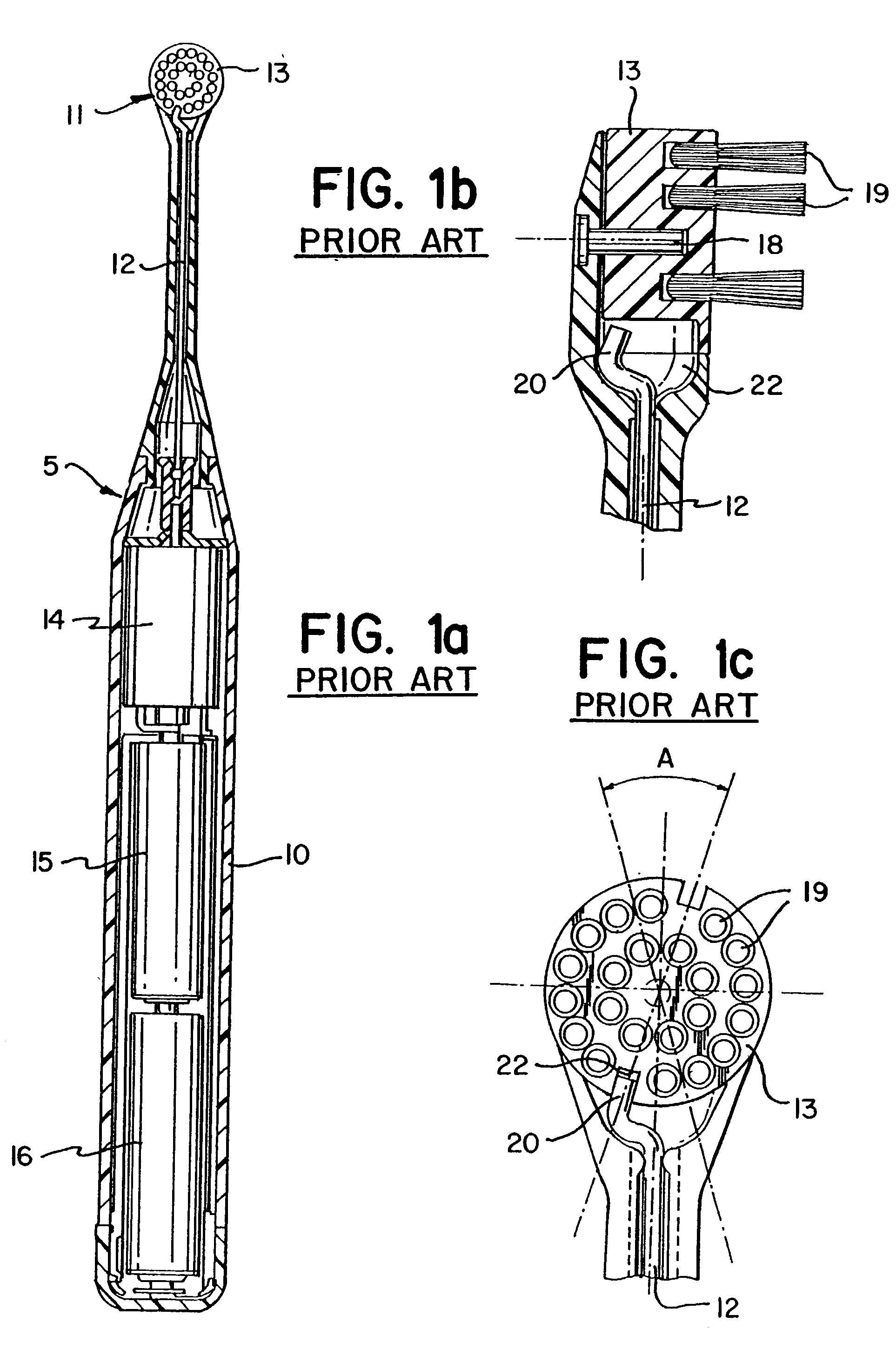Toothbrush with sectorial motion
a toothbrush and sectorial technology, applied in the field of toothbrushes, can solve the problems of limiting the area of bristles available for teeth cleaning, individual teeth often have extremely complex surfaces, and subject to various limitations, so as to improve the cleaning, polishing, whitening, massaging and stimulating teeth and gums, and increase the movement of bristles.
- Summary
- Abstract
- Description
- Claims
- Application Information
AI Technical Summary
Benefits of technology
Problems solved by technology
Method used
Image
Examples
Embodiment Construction
[0047] Referring to FIGS. 2-4, a toothbrush 100 includes a handle 102 at a proximal end thereof that defines an interior compartment (not shown) for housing various components and a brush section 104 having a neck 106 and a head 120 at a distal end of the toothbrush 100. The neck 106 defines an interior compartment (not shown) for housing various working components of the toothbrush 100. The head 120 is preferably generally aligned with the longitudinal axis of the toothbrush 100.
[0048] In a preferred embodiment, the brush section 104 is integrally formed with the handle 102. In an alternate embodiment, the brush section 104 may be detachably connected to the handle 102 at a location along the toothbrush. Those skilled in the art will appreciate the various manners in which this may be accomplished, e.g., friction fit, threaded connection, interlocking or bayonet fitting, etc. Detachability of the brush section 104 may enable desirable features of the toothbrush 100, for example, cl...
PUM
 Login to View More
Login to View More Abstract
Description
Claims
Application Information
 Login to View More
Login to View More - R&D
- Intellectual Property
- Life Sciences
- Materials
- Tech Scout
- Unparalleled Data Quality
- Higher Quality Content
- 60% Fewer Hallucinations
Browse by: Latest US Patents, China's latest patents, Technical Efficacy Thesaurus, Application Domain, Technology Topic, Popular Technical Reports.
© 2025 PatSnap. All rights reserved.Legal|Privacy policy|Modern Slavery Act Transparency Statement|Sitemap|About US| Contact US: help@patsnap.com



